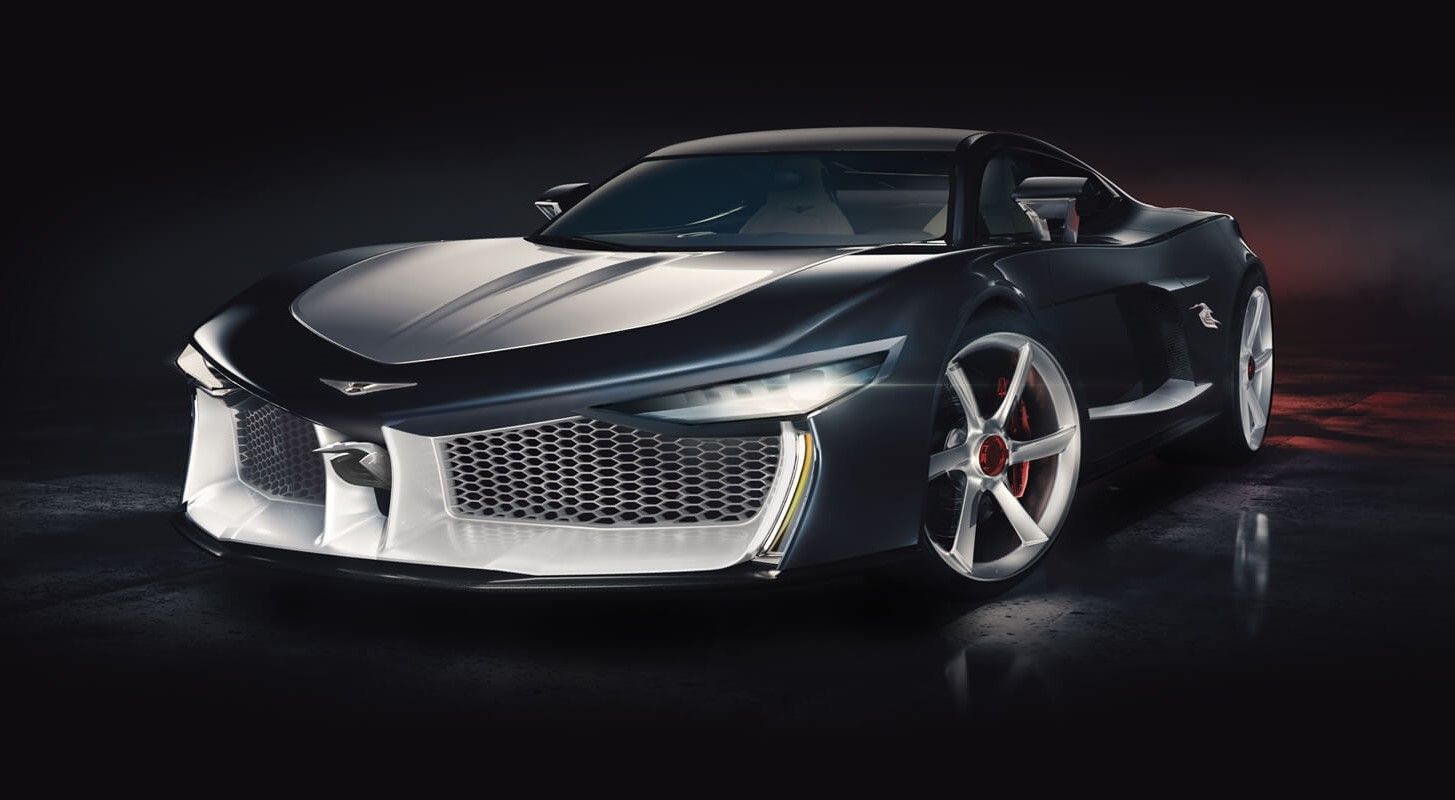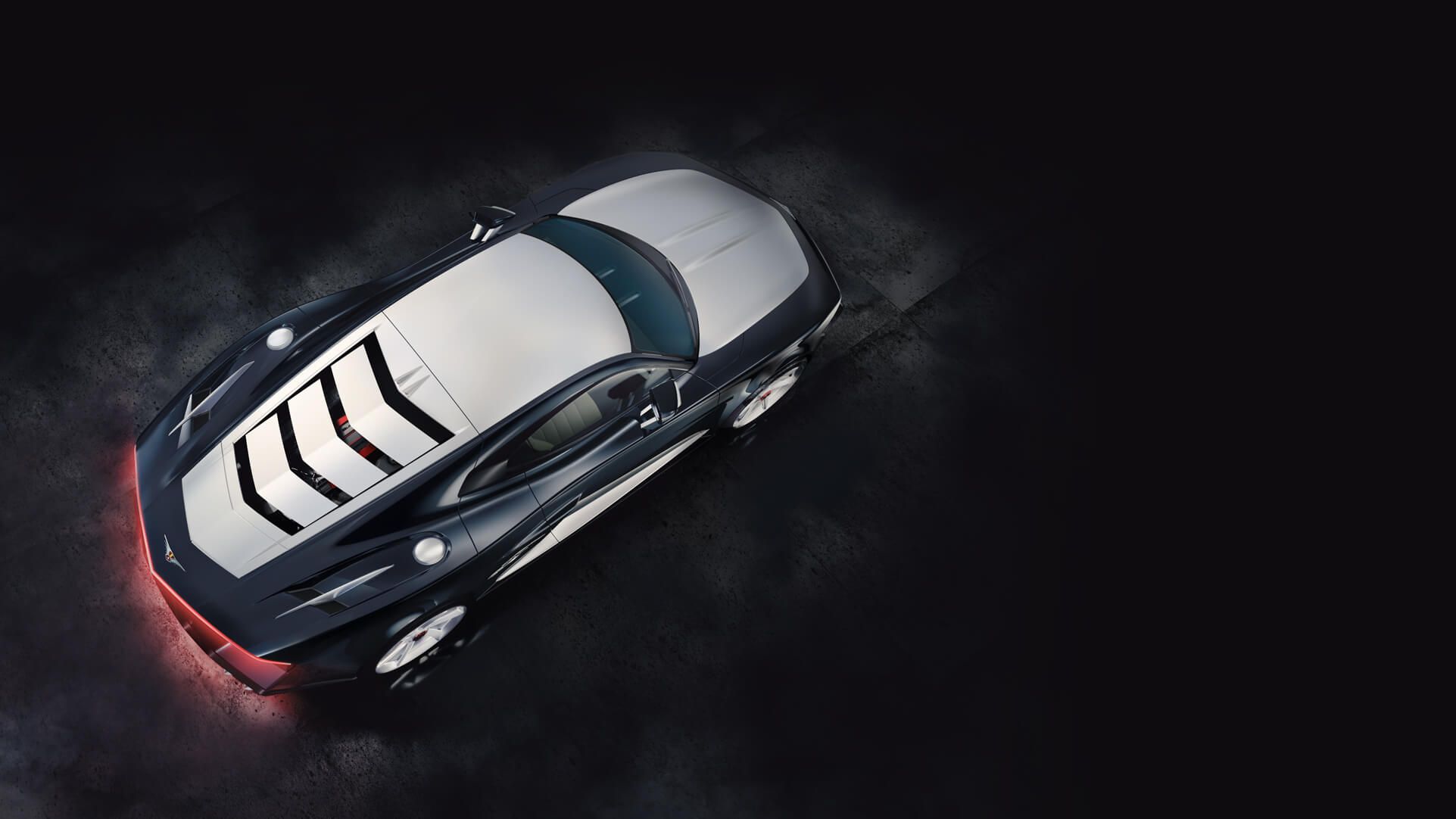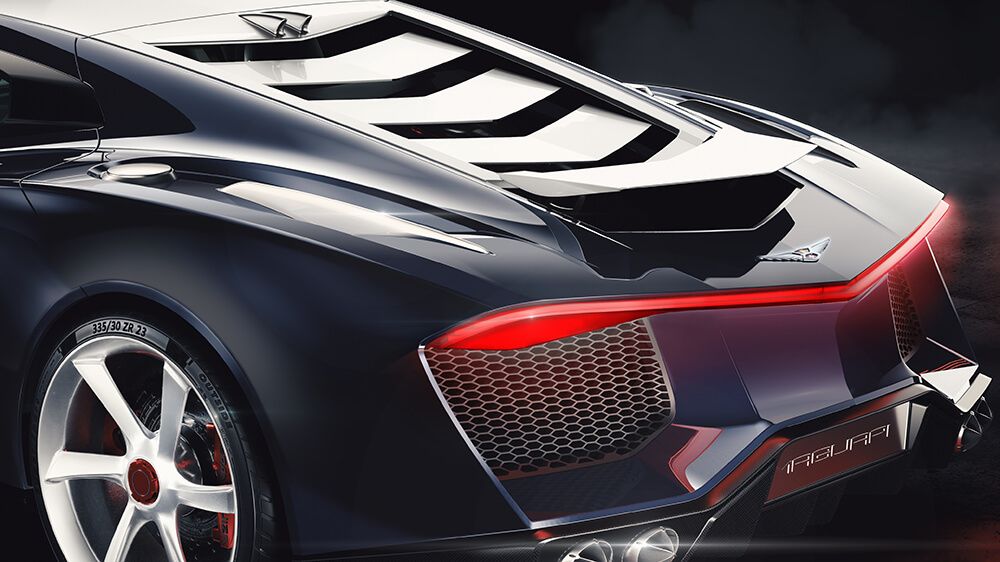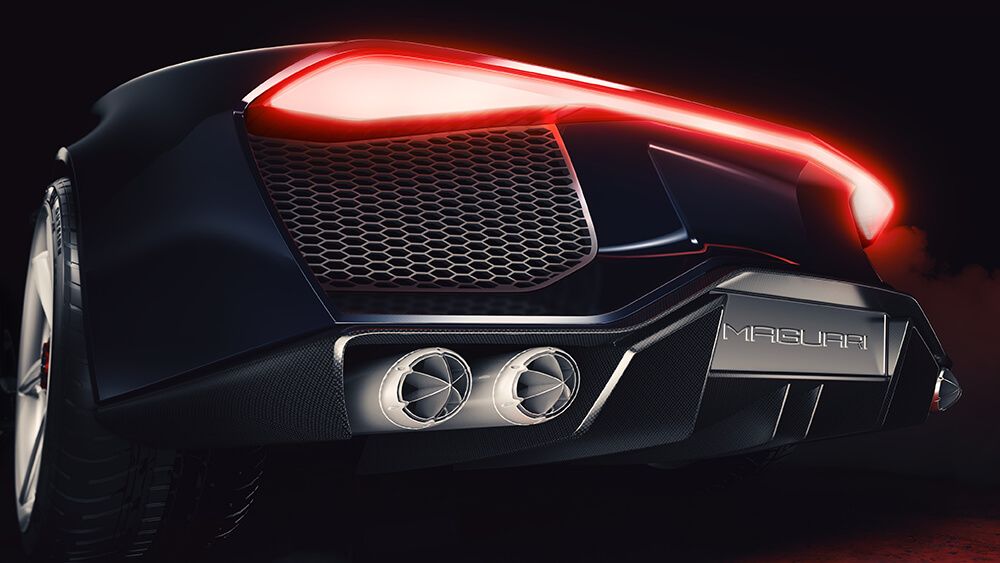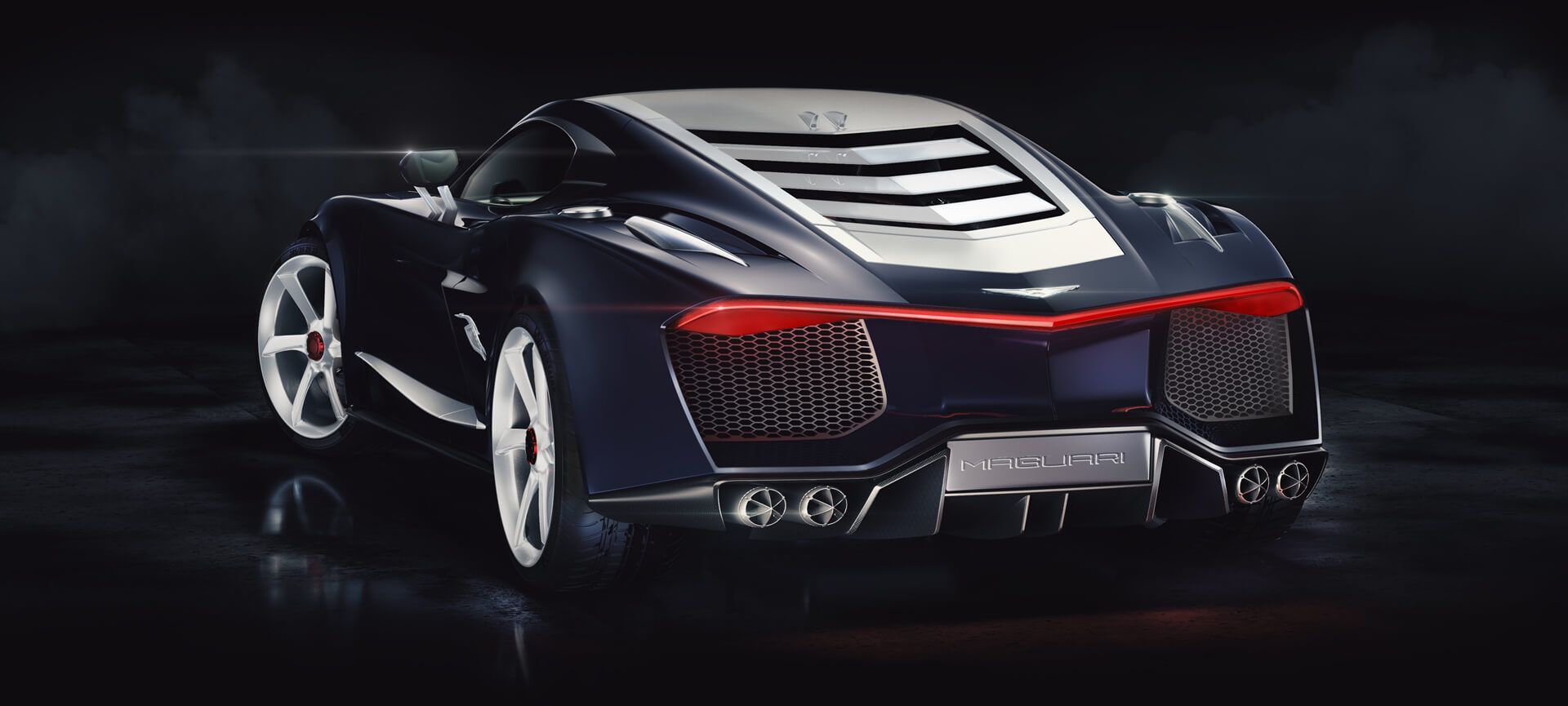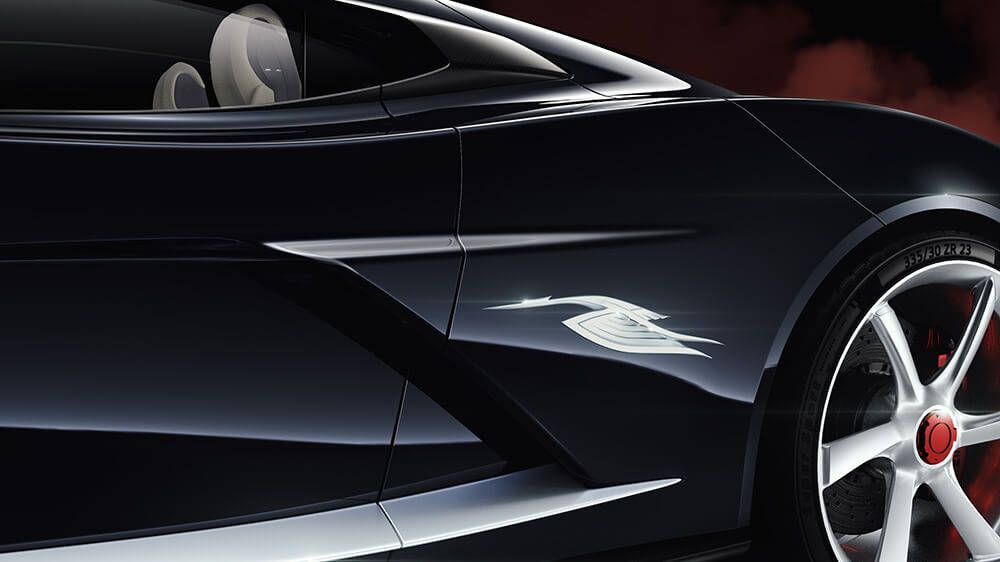Spanish automaker Hispano-Suiza promised to deliver on its return to the auto industry with the Carmen. That's a promise that we're still waiting on, but another automaker that also calls itself Hispano-Suiza has unveiled the Maguari HS1 GTC supercar. Named after a stork that’s native to South America, the Maguari HS1 GTC is a supercar that packs a Lamborghini-sourced V-10 engine and a pair of turbochargers that combine to produce a whopping 1,085 horsepower. Confusion notwithstanding, the Hispano-Suiza Maguari HS1 GTC is a supercar that comes from German-based Hispano Suiza Automobile Manufaktur AG. That's a different company from Spanish-based Hispano-Suiza Cars, which unveiled teasers for its own new model last week, called the Carmen.
If it was a statement that needed to be made, Hispano-Suiza made its statement emphatically clear. Except that a different Hispano-Suiza made this statement. If you’re as confused as we are, here’s a quick backstory. There are two automakers that are named after the legendary Spanish coachbuilder. One is based in Spain while the other calls Germany home. The Spanish-based Hispano-Suiza is bringing its new model — the Carmen — to the 2019 Geneva Motor Show.
The two companies are not related to one another. In fact, both are actually claiming the right to use the Hispano-Suiza brand for its cars. At some point in the near future, expensive lawyers from both sides will most likely duke it out in court to settle this issue. But for now, we’re ceding the spotlight to the German-based Hispano-Suiza, which also happens to be responsible for the Gran Turismo Coupe Concept that we saw at the 2010 Geneva Motor Show. Nine years after that debut, the German Hispano-Suiza is headed back to Geneva to showcase an impressive-looking supercar with performance chops that could make the supercar segment stand and take notice.
Man, alive! The Maguari HS1 GTC is a car worth of its supercar label. The design is incredible, and Prof. Olivier Boulay, a French car designer, and architect, is responsible for it. Prof. Boulay also happens to be the Vice President of Daimler’s Advanced Design Centre in Beijing, China. When it comes to designing cars, the man knows what he’s doing. You only need to take one look at the Maguari HS1 GTC to be convinced of Boulay’s auto design chops.
We don’t get to see the interior, but we can wait for Geneva on that end. Personally, I don’t mind that a little mystery is left on the table. What isn’t a mystery at this point is the Maguari HS1 GTC’s powertrain. According to the automaker, the supercar is powered by a Lamborghini-sourced V-10 engine without specifying what V-10 engine it is. On that end, it should be the Lamborghini Huracan’s 5.2-liter V-10 engine.
With the Maguari HS1 GTC in full flight, German Hispano-Suiza claims that the supercar is capable of sprinting from 0 to 62 mph in just 2.8 seconds before maxing at a “limited” top speed of 236 mph. Yes, the Maguari HS1 GTC has a limited top speed. I can’t begin to imagine how fast this thing can go if that limiter is disabled. Could the German Hispano-Suiza and the Maguari HS1 GTC make a run at the production car top speed record? It’s unlikely to happen, but our imaginations have come this far when it comes to this supercar. What’s an extra thought cost these days?
Austrian car designer Erwin Leo Himmel is the man behind this version of Hispano-Suiza. In describing the Maguari HS1 GTC, Himmel left nothing to the imagination when it comes to his plan for the company. "We want to build the most exclusive and comfortable luxury sports cars – jaw-dropping masterpieces," he said. "The legacy of (original Hispano Suiza founder) Marc Birkigt continues. But we do not only build cars; we also want to bring together like-minded people to actually live the brand."
different0}
|
Engine: |
V10 – mid-engine with twin-turbo and e-compressors |
|
Capacity: |
5204 cc |
|
Transmission: |
7-speed automatic / sequential paddle shift |
|
Traction: |
Rear wheel drive |
|
Clutch: |
Twin-plate clutch |
|
Max. Power: |
1085 HP / 798 KW @ 8.200 rpm |
|
Max. Torque: |
1050 Nm @ 6,650 rpm |
|
Acceleration: |
0-100 km/h in 2,8 s |
|
Top Speed: |
Beyond 380 km/h (electronically limited) |
|
Weight: |
1,780 kg |
|
Dimensions: |
5100 mm x 2100 mm x 1250 mm |
|
Chassis: |
Aluminum space frame with carbon-fiber bodywork |
|
Brakes: |
Front/Rear: 420/400 mm carbon-ceramics – ventilated inside (HSCCB technology) |
|
Tires/Wheels: Front: 22-inch 6-spoke milled alloy wheels with central lock -285/35 ZR22 |
|
|
Suspension: |
Active Hybrid Lifting System (mechanical/electrical) |
Hispano-Suiza Maguari HS1 GTC specifications
Here's The Latest Teaser for the Hispano-Suiza Carmen EV That'll Debut at the 2019 Geneva Motor Show

